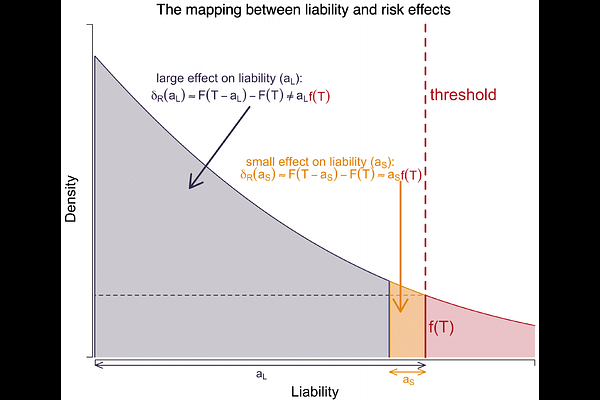Mutation-selection-drift balance models of complex diseases

Mutation-selection-drift balance models of complex diseases
Berg, J. J.; Li, X.; Riall, K.; Hayward, L.; Sella, G.
AbstractGenetic variation that influences complex disease susceptibility is introduced into the population by mutation and removed by natural selection and genetic drift. This mutation-selection-drift-balance (MSDB) shapes the prevalence of a disease and its genetic architecture. To date, however, MSDB has only been modeled for monogenic (Mendelian) diseases. Here, we develop a MSDB model for complex disease susceptibility: we assume that genotype relates to disease risk according to the canonical liability threshold model and that selection on variants affecting risk derives from the fitness cost of the disease, and focus on diseases that are highly polygenic, entail a substantial fitness cost, and are neither extremely common in the population nor exceedingly rare. Contrasting model predictions with GWAS and other findings in humans suggests that directional selection plays little role in shaping common genetic variation affecting complex disease susceptibility but might substantially affect rare, large effect variation. In turn, common variation affecting complex disease susceptibility appears to be dominated by pleiotropic stabilizing selection on other traits. Our results further suggest that current estimates of disease heritability are likely biased. More generally, our model provides a better understanding of the evolutionary processes that shape the architecture and prevalence of complex diseases.